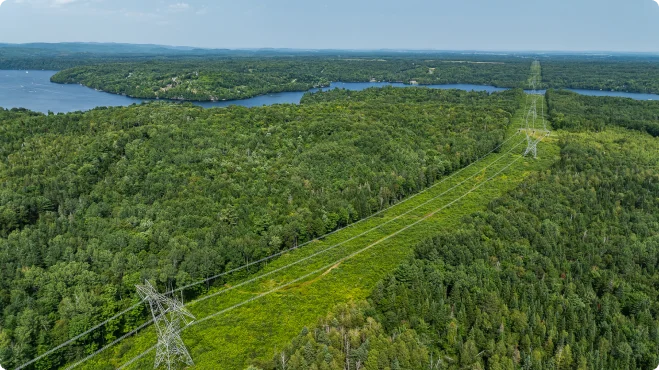Thank you for taking part!
750 people shared their feedback and opinions during the recent open houses. You weren’t able to attend one of these information and consultation activities? No worries, the recording of the May 8 webinar is now available for replay. To watch the webinar recording, simply click on the link and fill out the short form.
Project summary
Why?
- Enable additional electricity to be transmitted from northern and eastern Québec.
- Increase the transit capacity of existing 735‑kV lines that are operating at full capacity.
- Secure the electricity supply to major load centres.
- Improve grid resilience and reliability in the face of increasingly intense weather events.
How?
- Build two 735‑kV substations and approximately 200 km of 735‑kV lines.
When?
- 2032
Line routes and substation locations under study
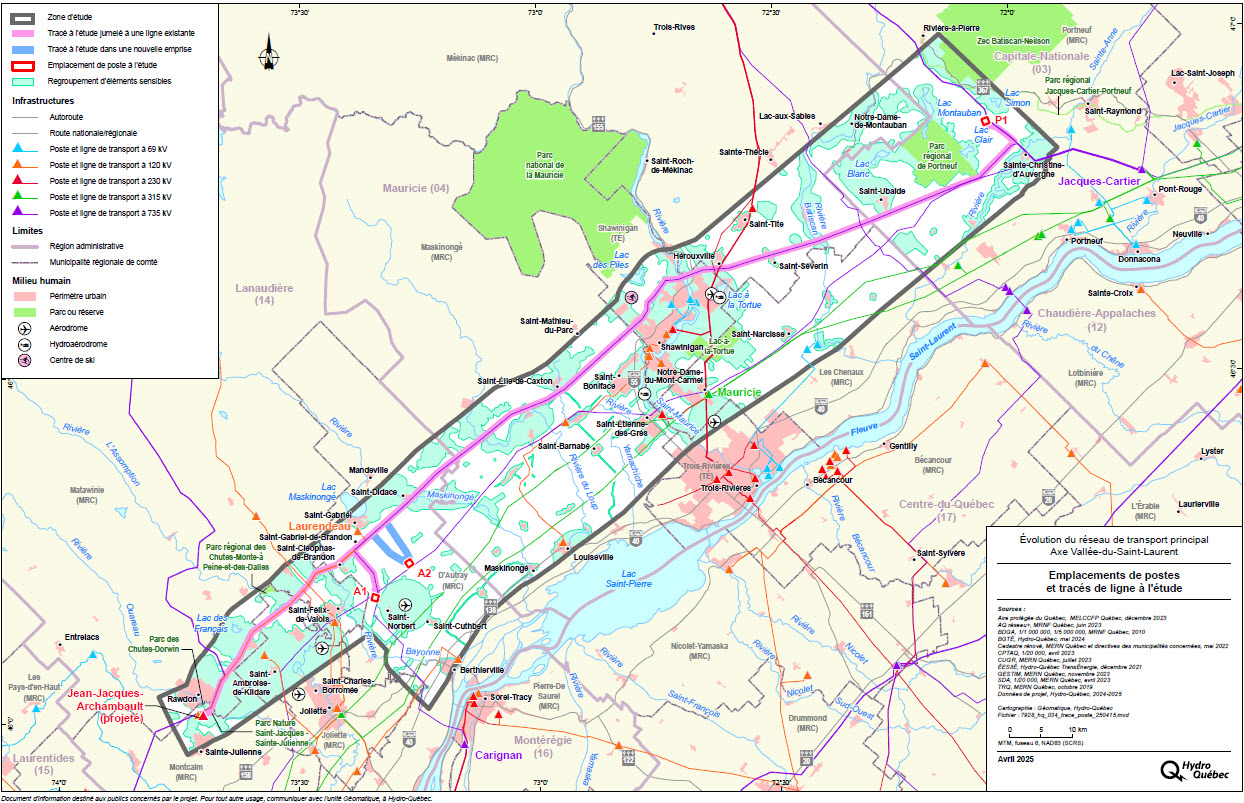
Towers
Transmission towers support the high-voltage conductors of overhead power lines. Their shape, height and sturdiness (mechanical strength) depend on the stresses to which they are exposed. For the Vallée‑du‑Saint‑Laurent project, mainly four-legged towers and guyed V- towers will be erected.
The right-of-way of the planned line
A right-of-way is the cleared corridor under power lines. It is important to maintain a safe distance between the conductors making up the line and the surrounding vegetation. Transmission lines are not covered by an insulating sheath. Instead, the air around them provides insulation. So, it's important that nothing come close enough to the lines to create an electric arc.
The right-of-way is also used to install, operate, maintain and repair overhead and transmission lines safely.
The width of a right-of-way depends on the voltage of the line, among other criteria. The higher the voltage of the line, the greater the clearance required and the wider the right-of-way.
For the Vallée‑du‑Saint‑Laurent project, the line routes under study run along existing lines for most of their length. This will reduce the total width of the rights- of-way by about 20% to 30%, in turn reducing the clearing required.
Typical clearing for the planned right-of-way
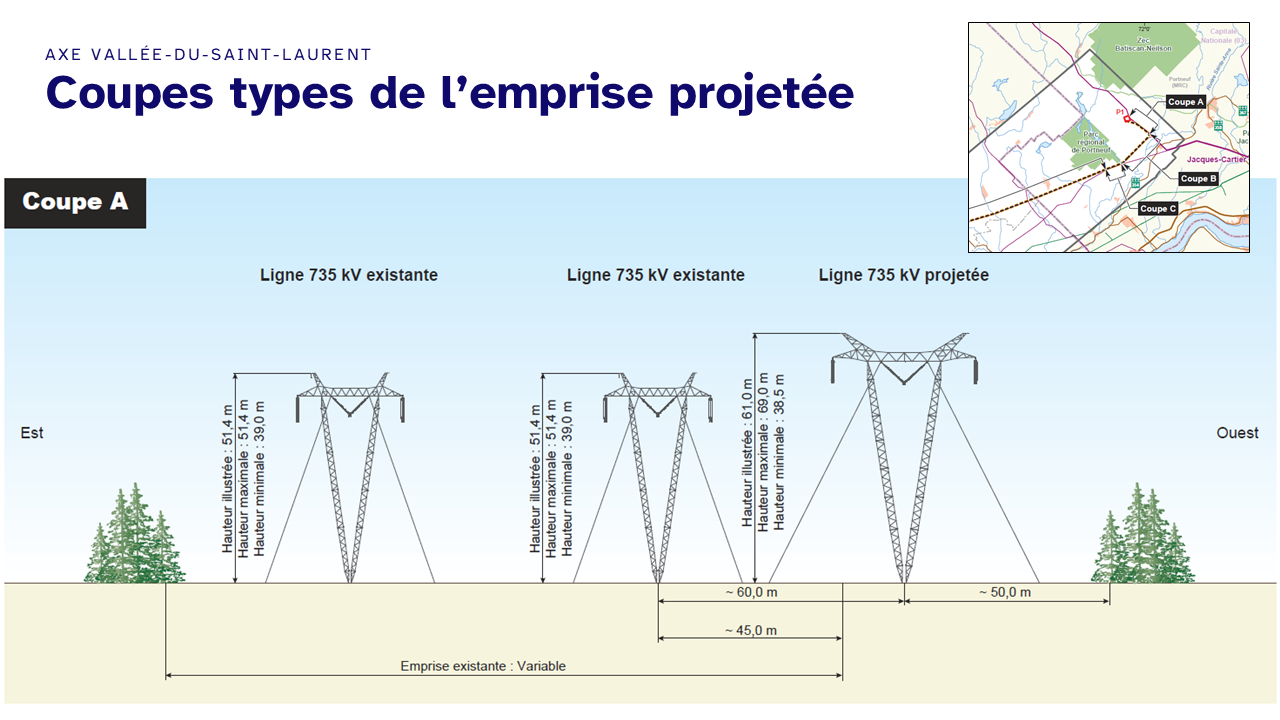
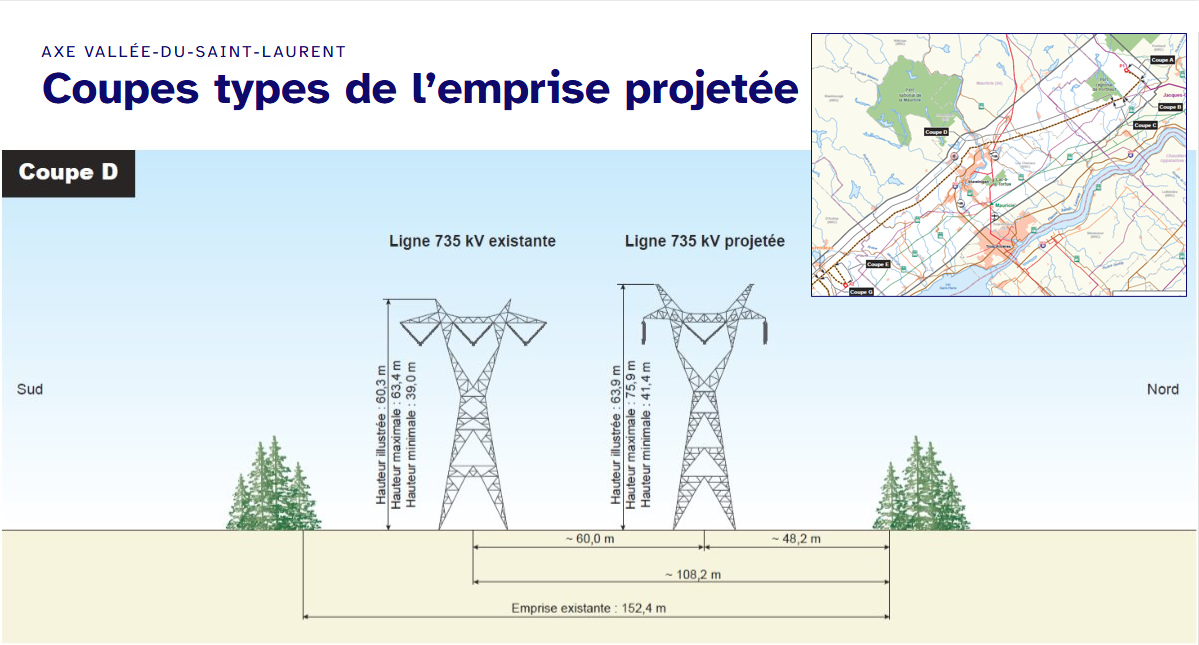
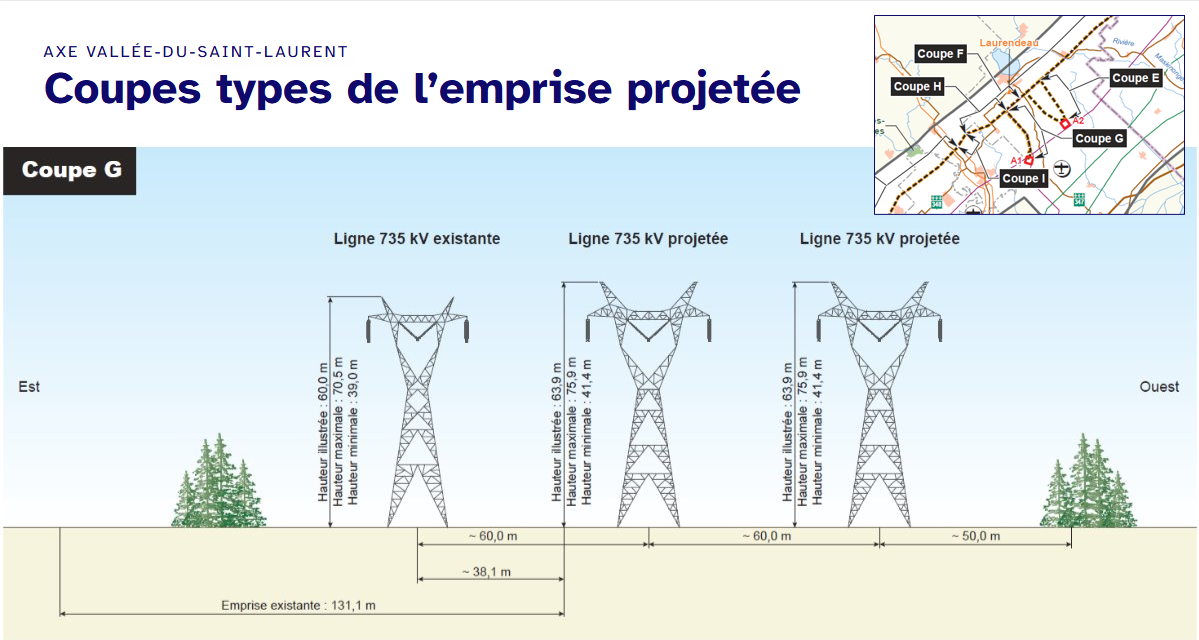
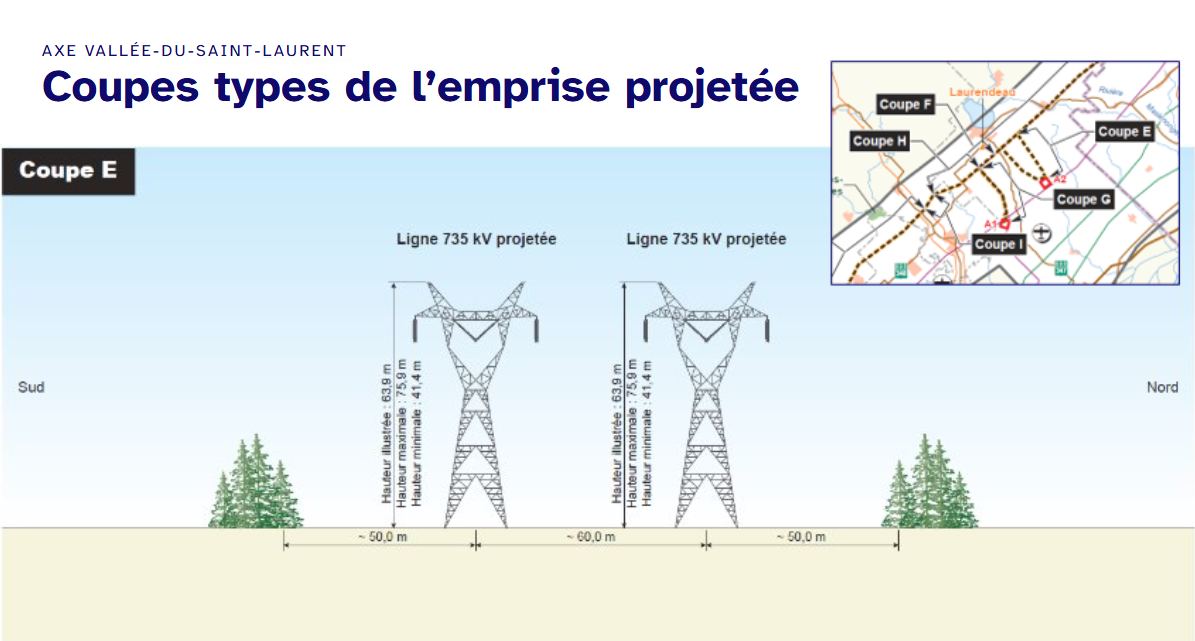
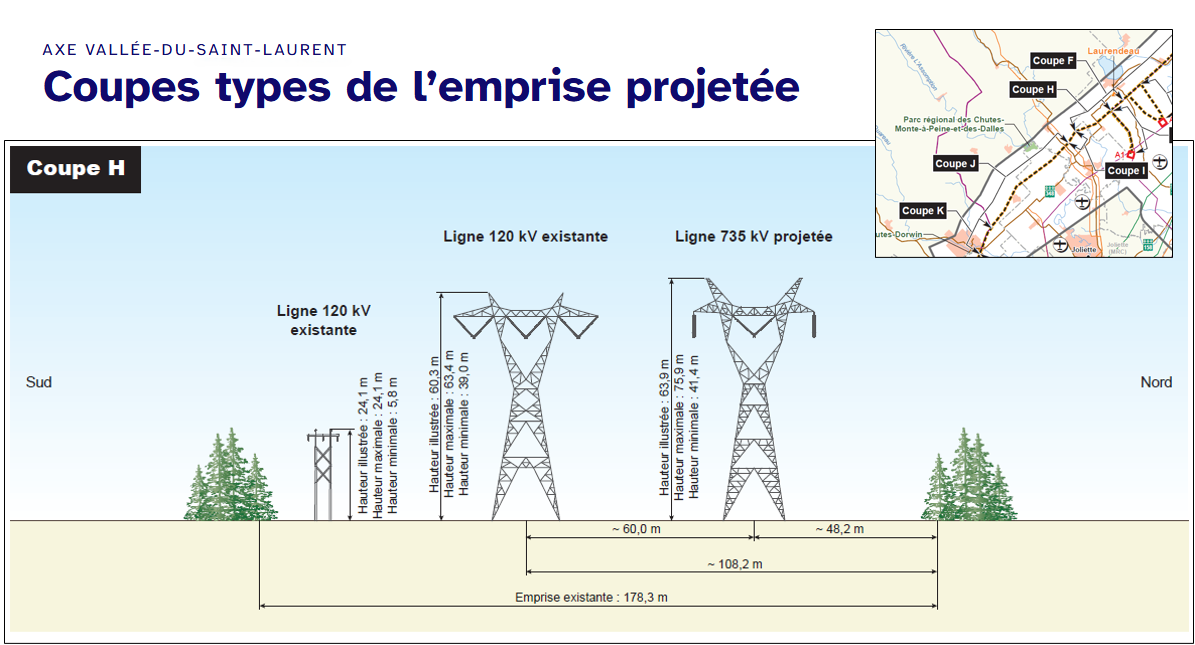
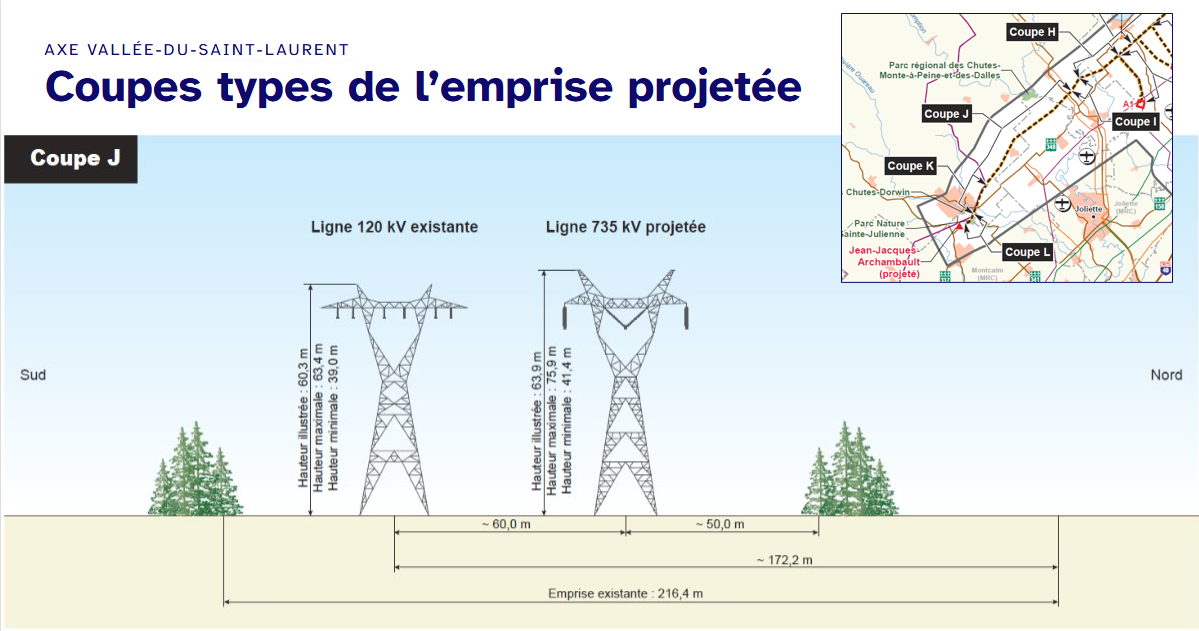

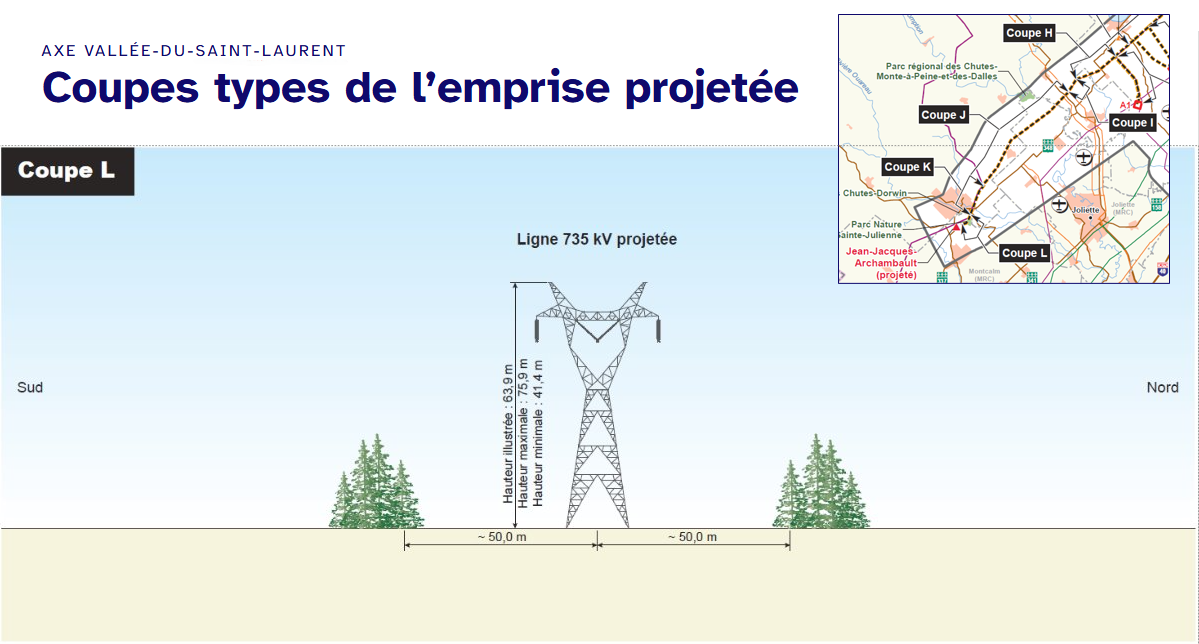

Project schedule
2024-2026
Draft design phase: Technical studies, environmental assessment, public consultation
2026-2028
Government approvals
2029-2032
Work: Clearing and construction
Documentation
Information bulletin
- Project consultation – Spring 2025 [PDF 1425 kB – in French only]
- Project presentation — November 2024 [PDF 670 kB – in French only]
Maps
- Map of constraints and sensitive components (2/2) – April 2025 [PDF 18 MB – in French only]
- Map of constraints and sensitive components (1/2) – April 2025 [PDF 18 MB – in French only]
- Map of constraints and sensitive components (2/2) – November 2024 [PDF 51.8 MB – in French only]
- Map of constraints and sensitive components (1/2) – November 2024 [PDF 55.9 MB – in French only]
- List of municipalities affected by the study area – November 2024 [PDF 1.5 kB – in French only]
- Study area map – October 2024 [PDF 1 MB – in French only]
Stage summaries
Media
To reach us
We’re very keen on keeping the lines of communication open. Please send us your questions and comments about the project.
Email us
Info‑Project line: 1 866 388‑1978
Yannick Charette
Advisor ‑ Relations with First Nations and Inuit
Info‑Project line: 1 418 294‑9988, ext. 2121
Strengthening the main transmission system – Vallée-du-Saint-Laurent [in French only]
Would you like to be informed about project progress and the consultation activities that have been scheduled?
